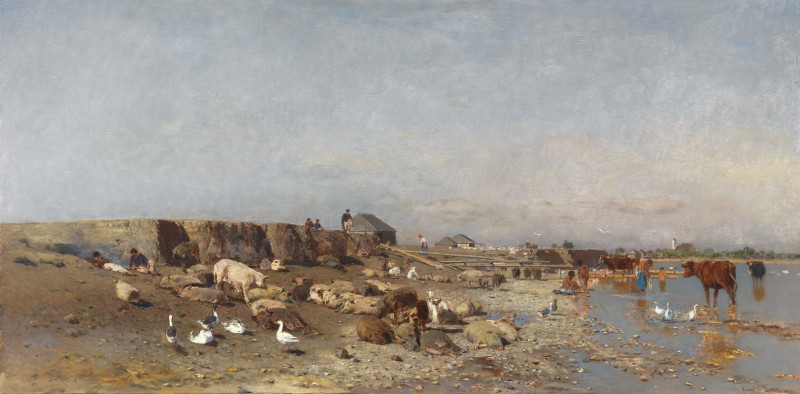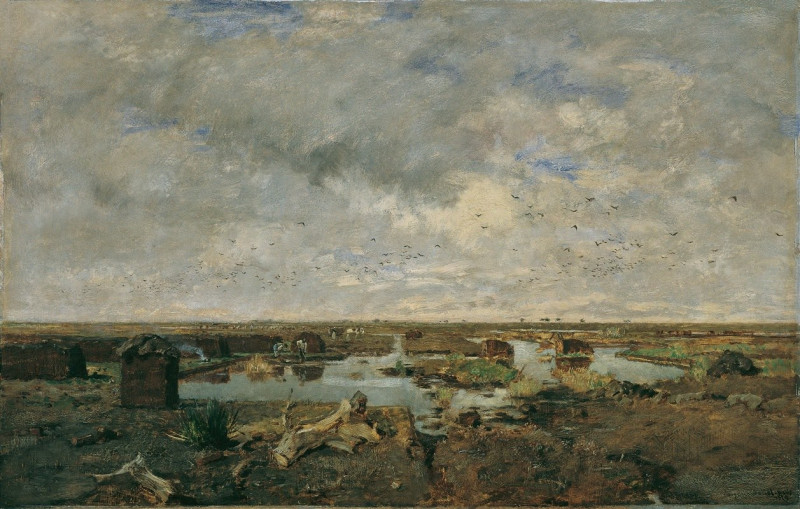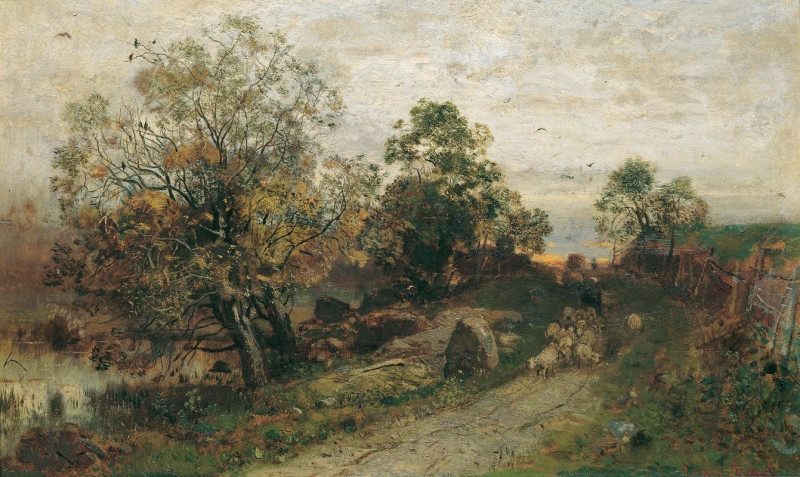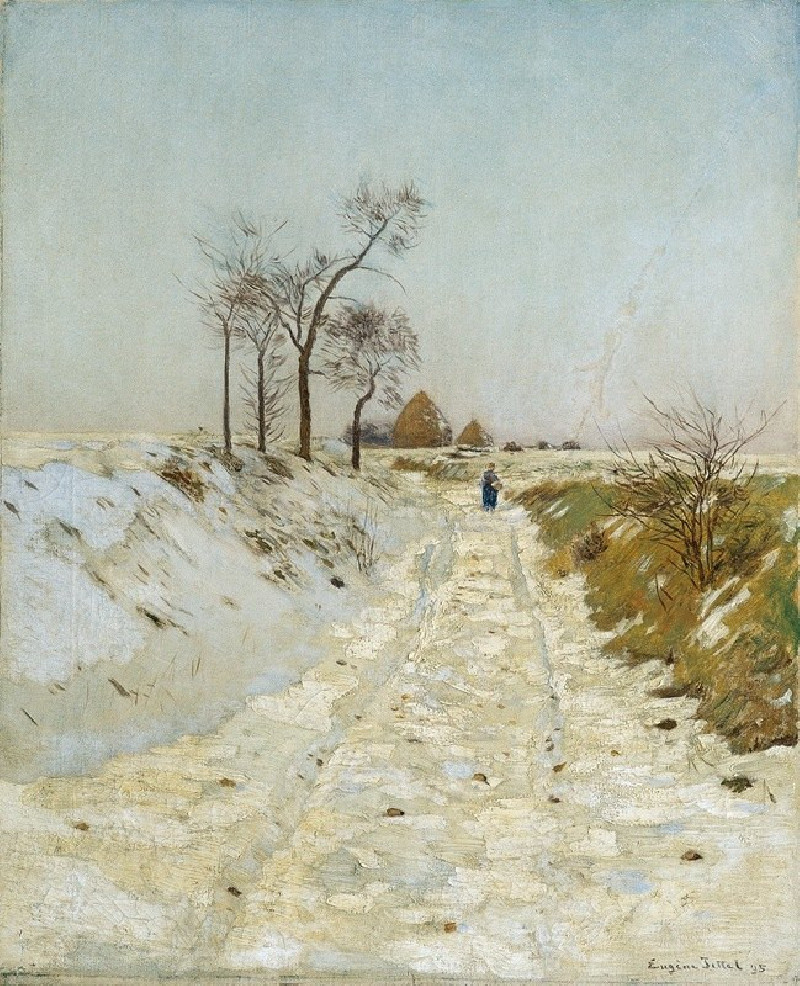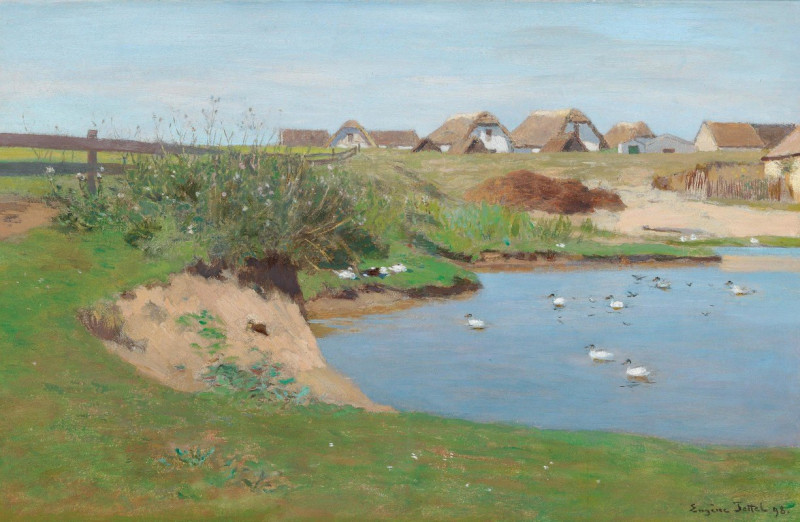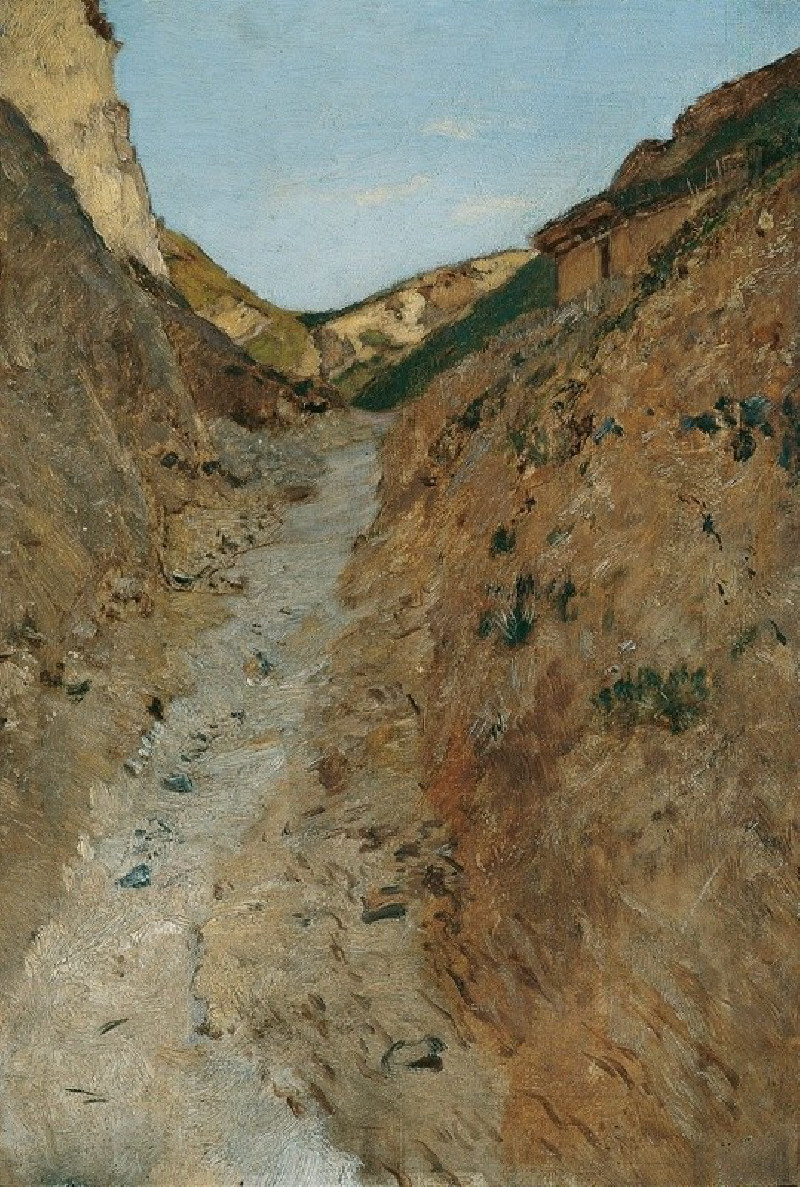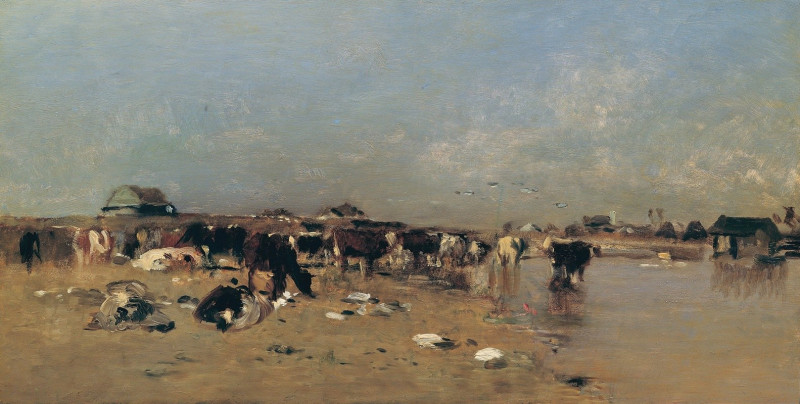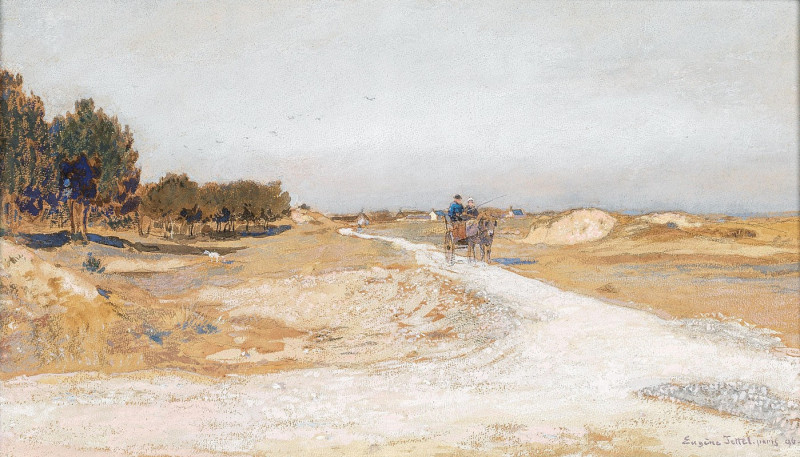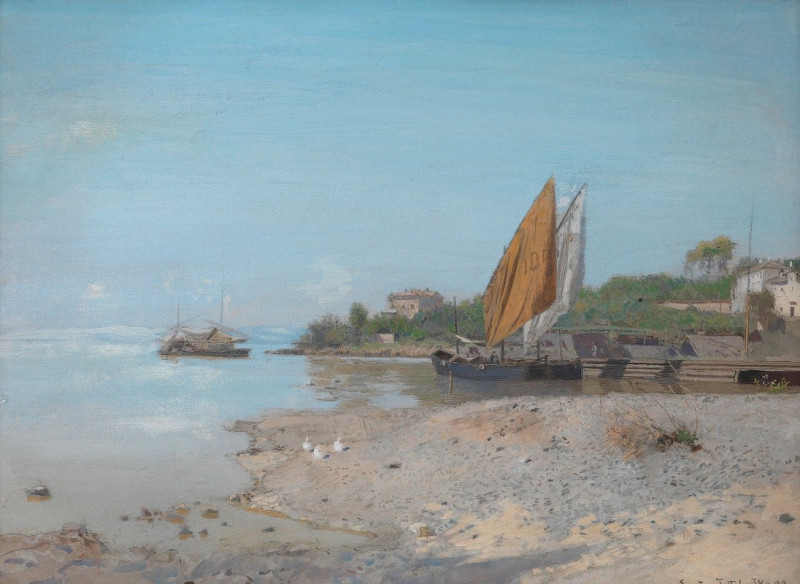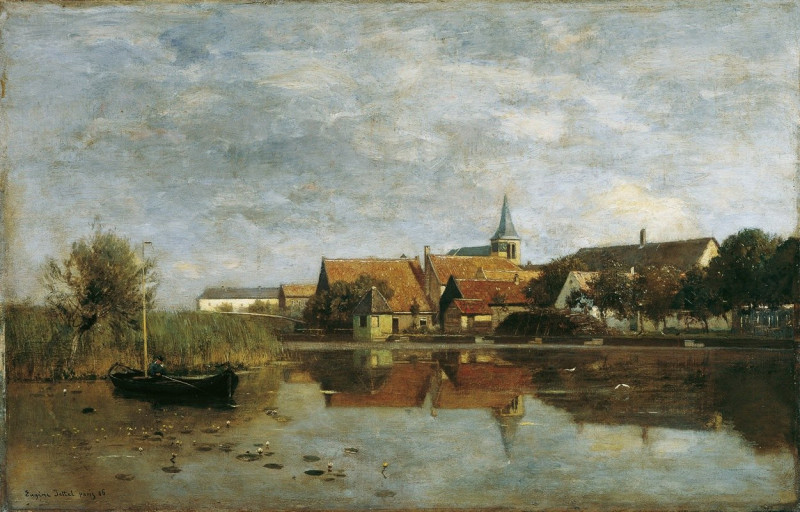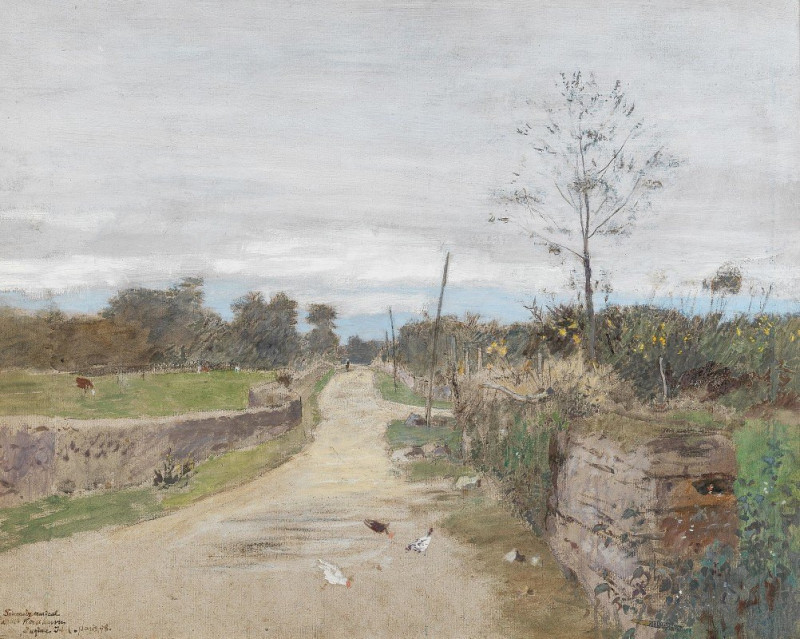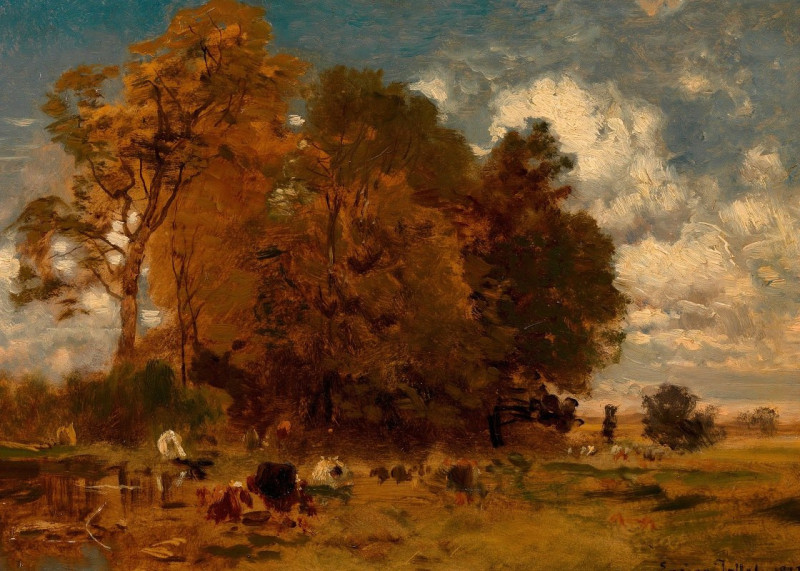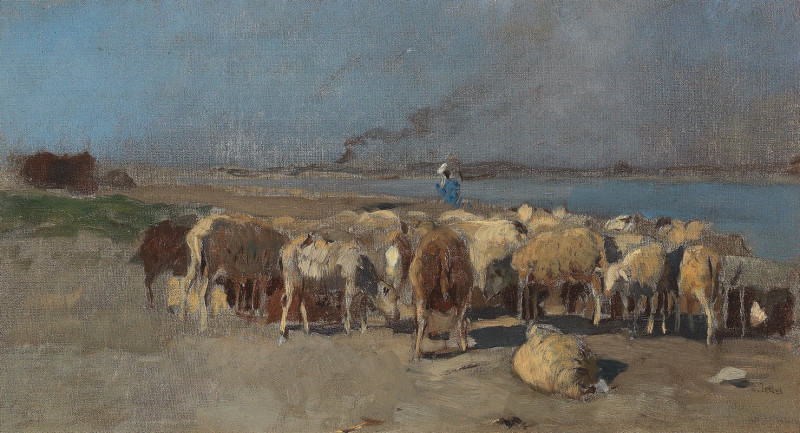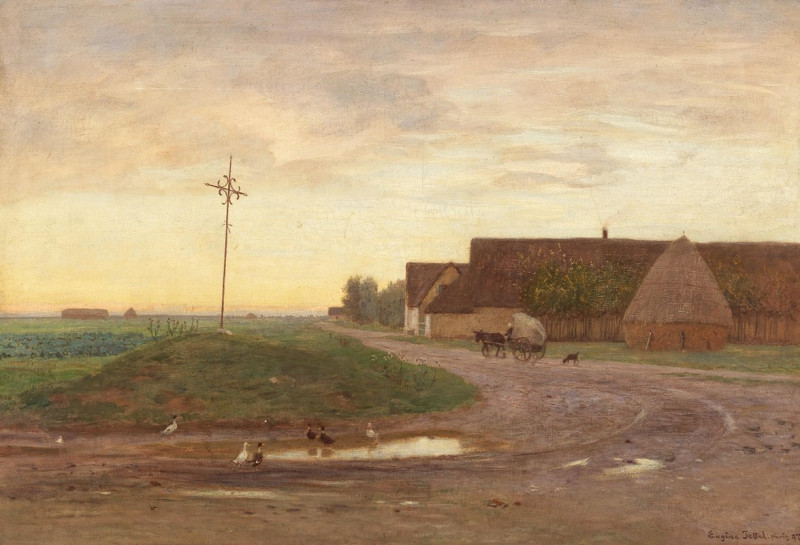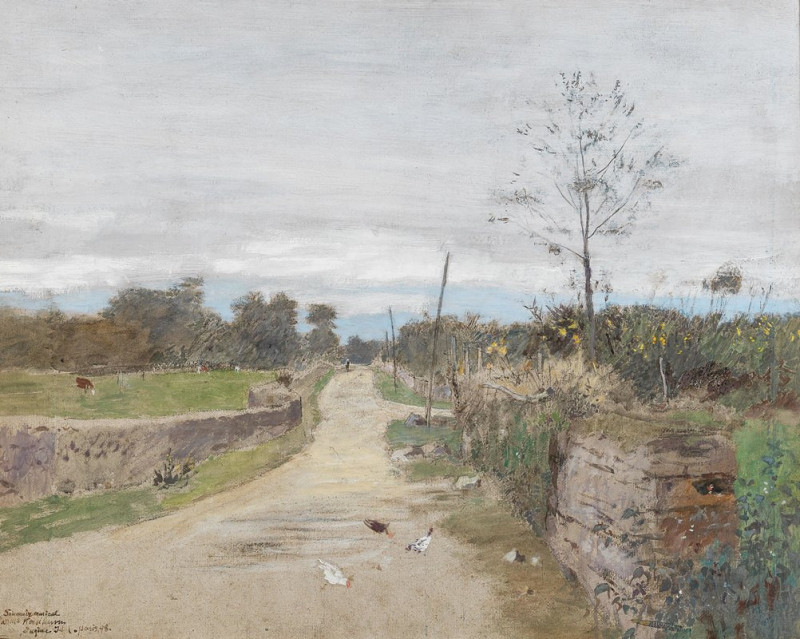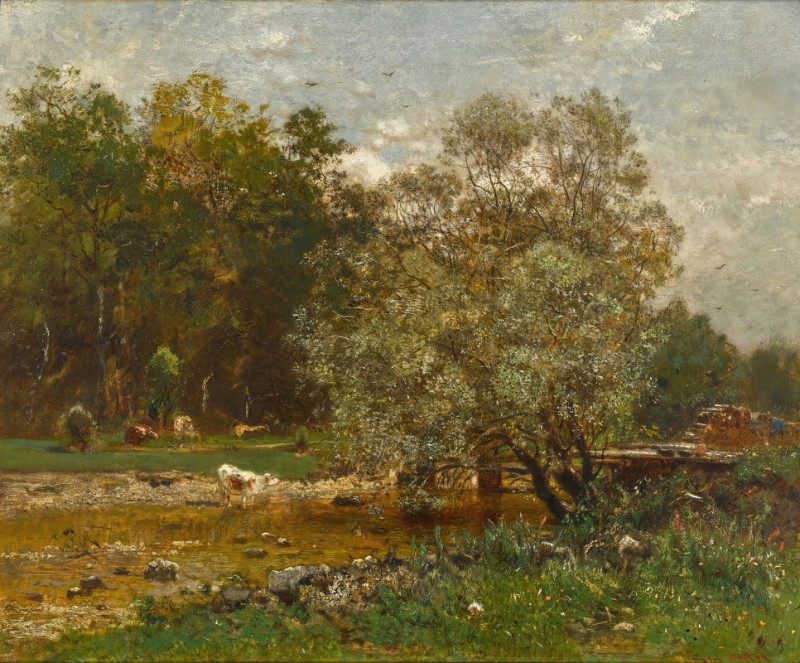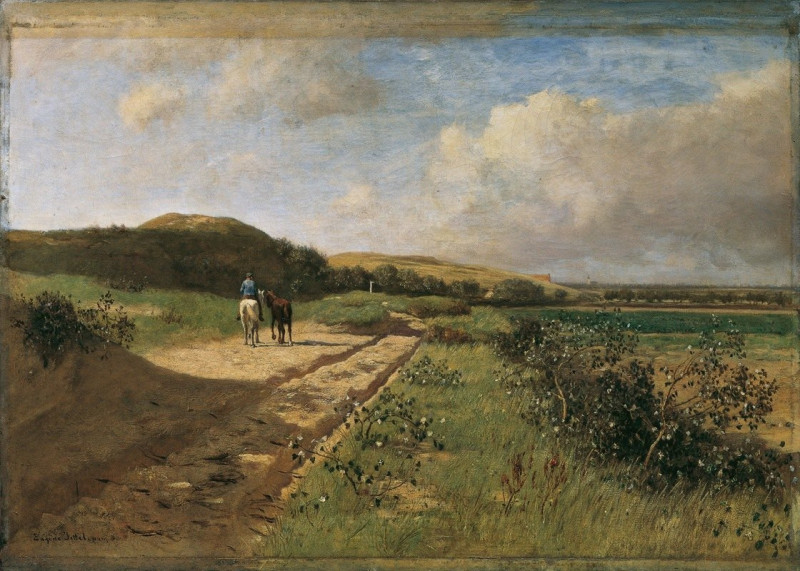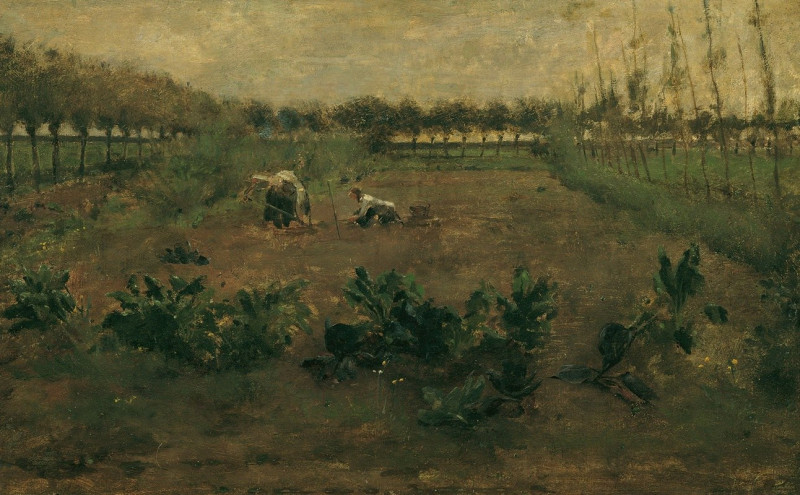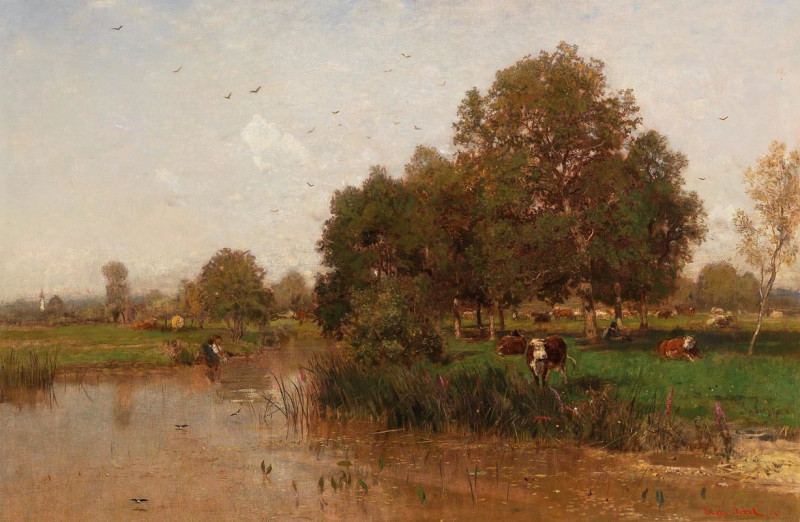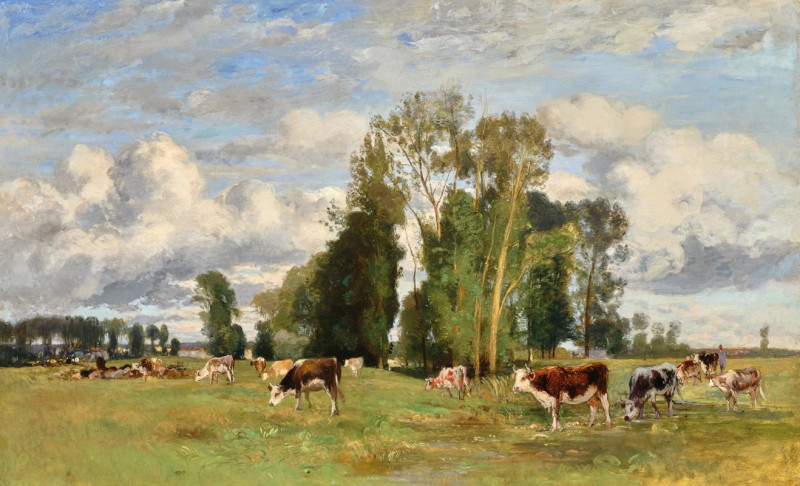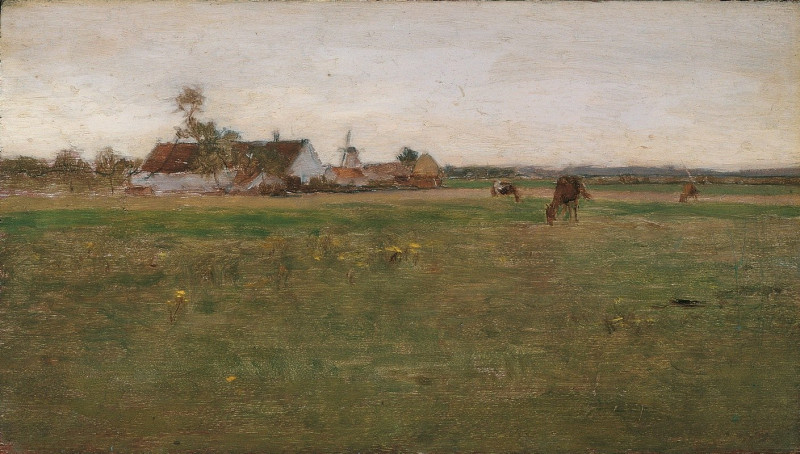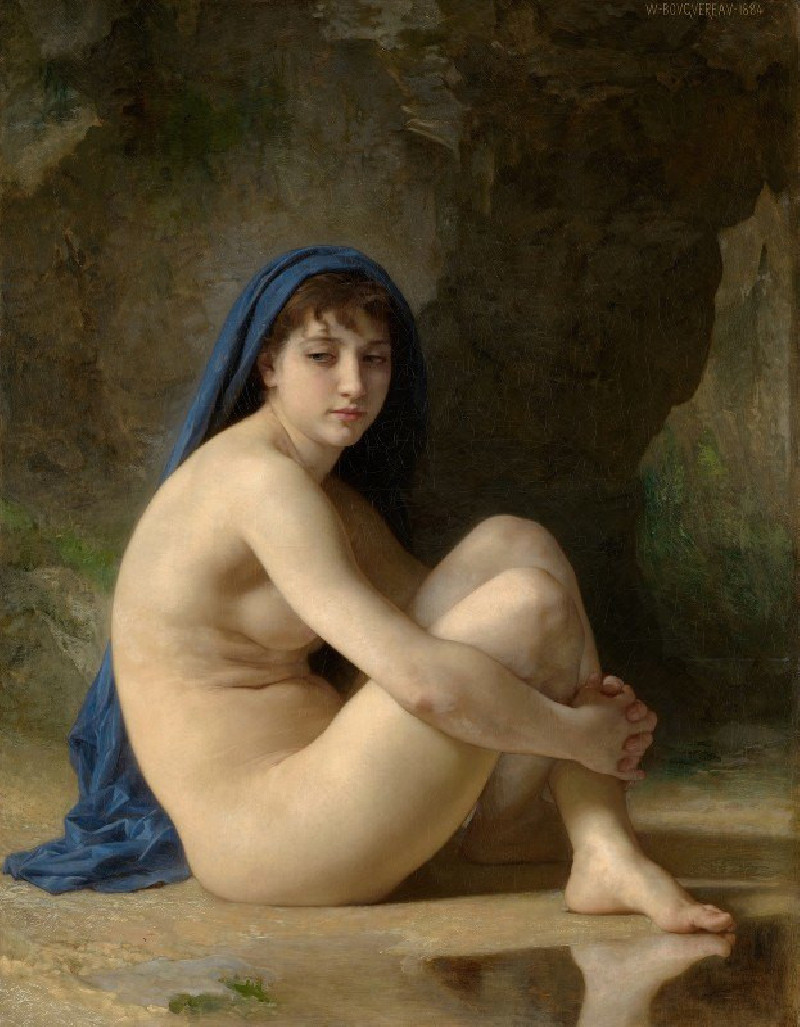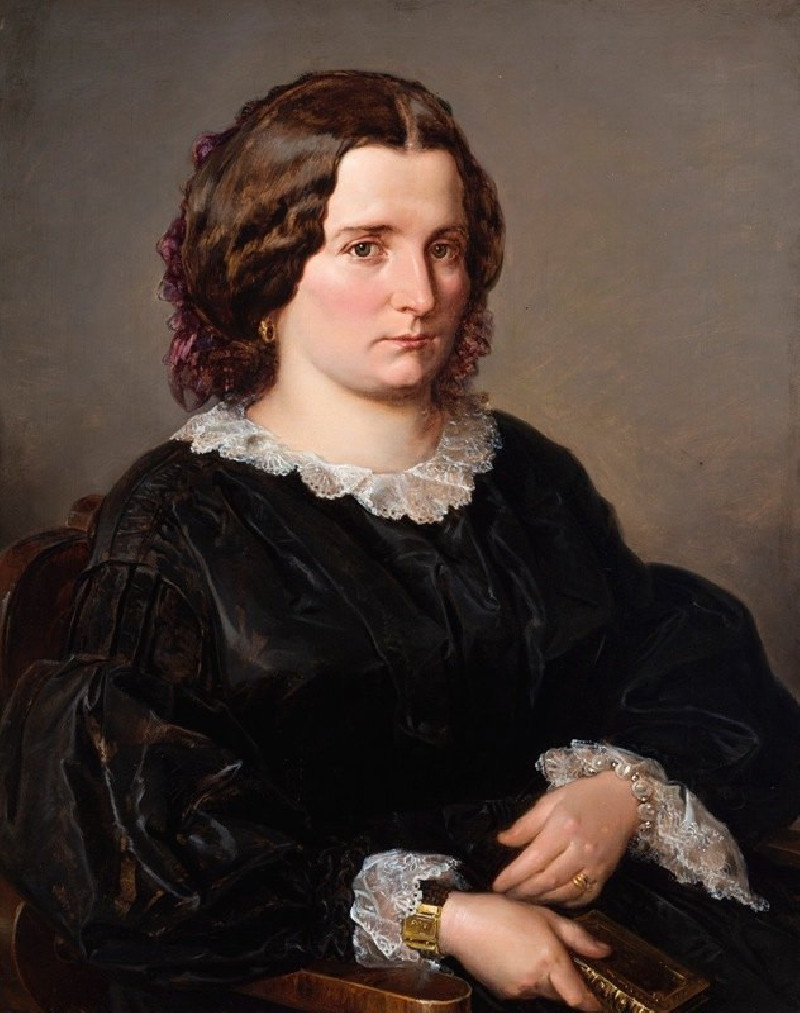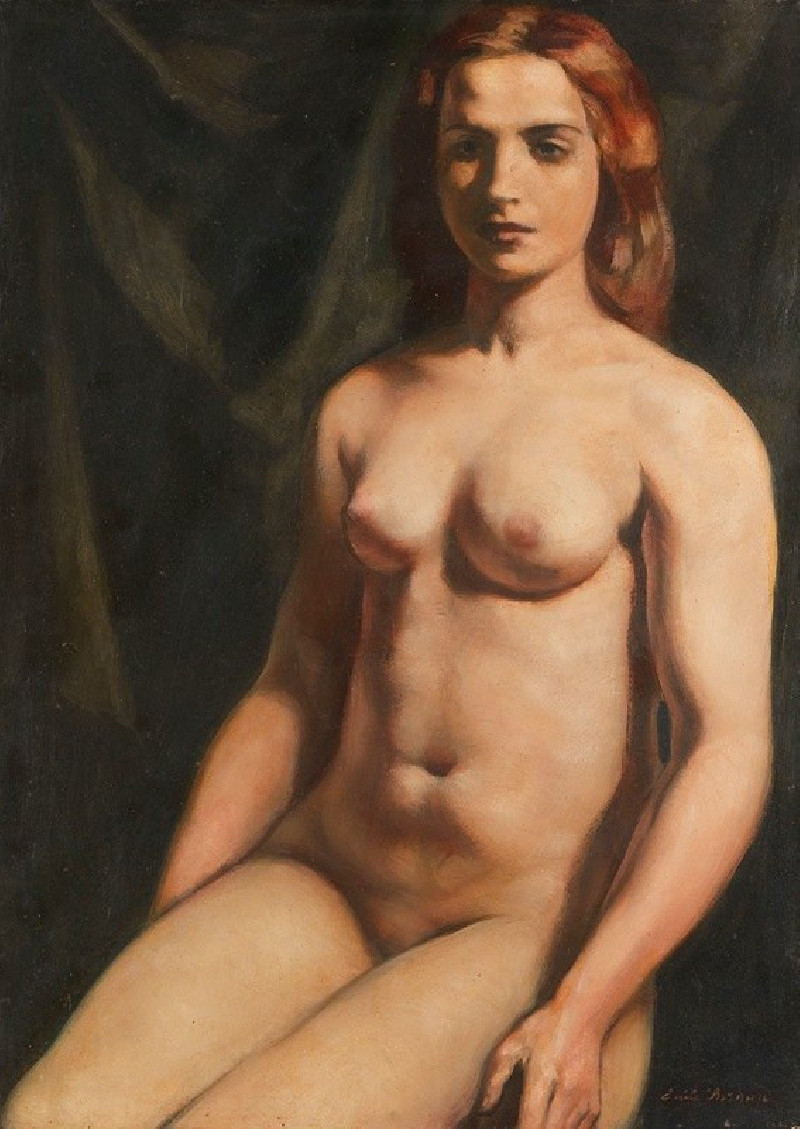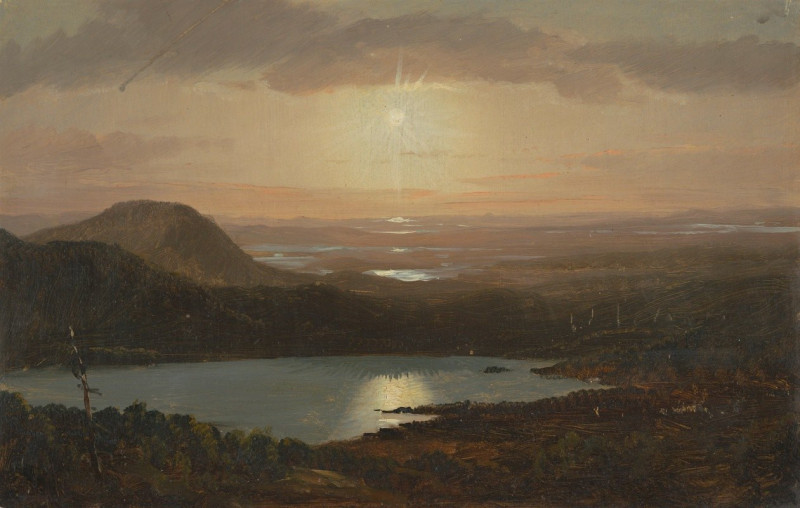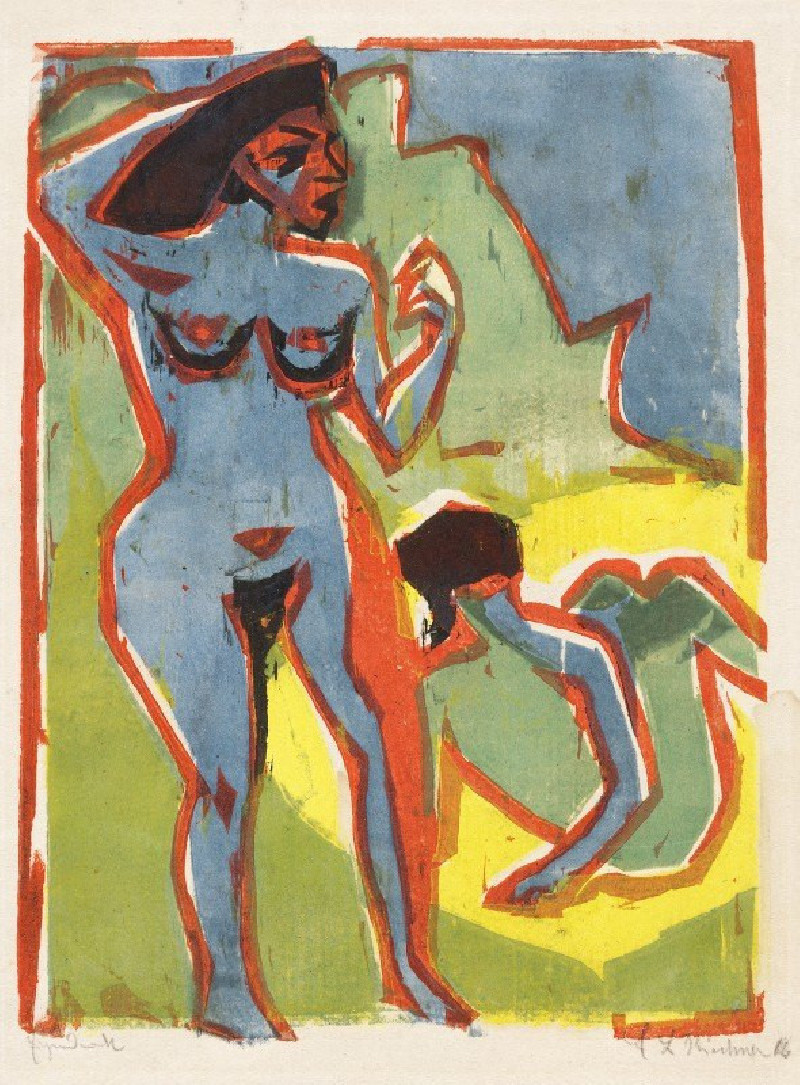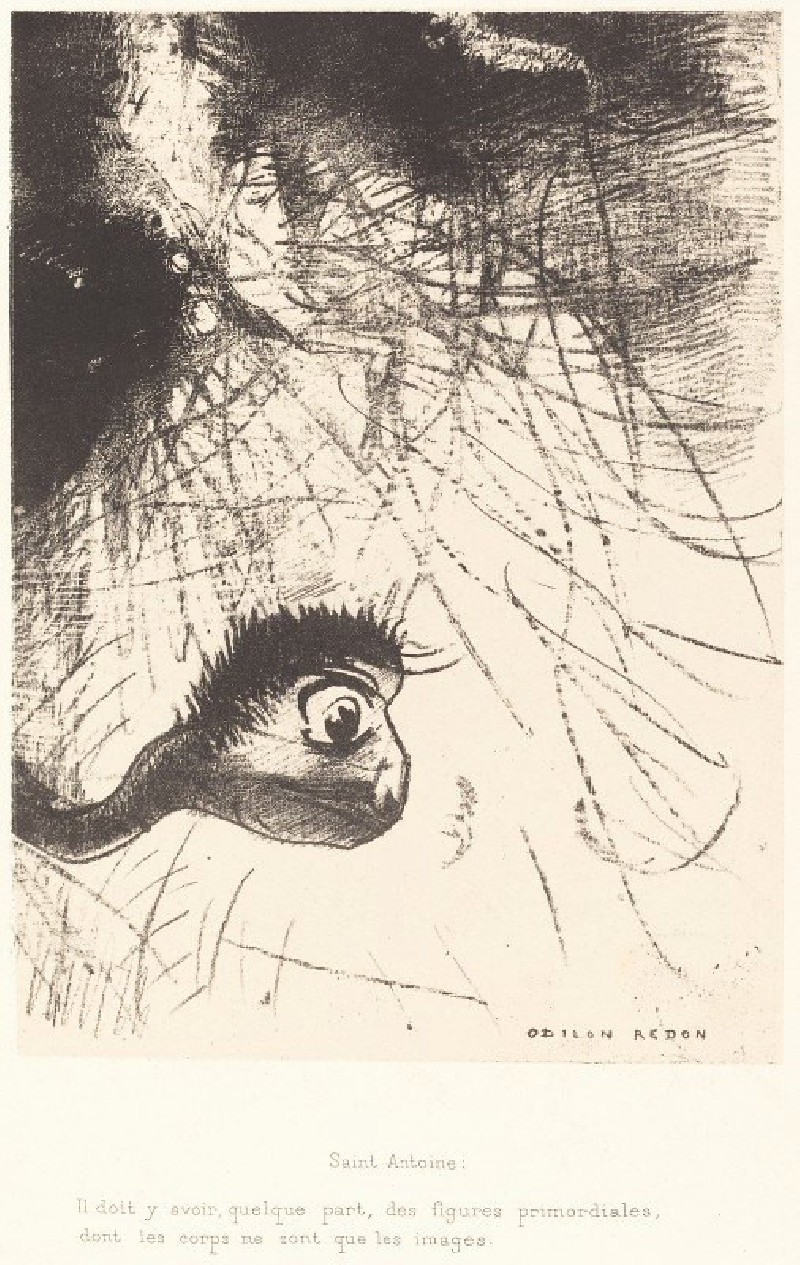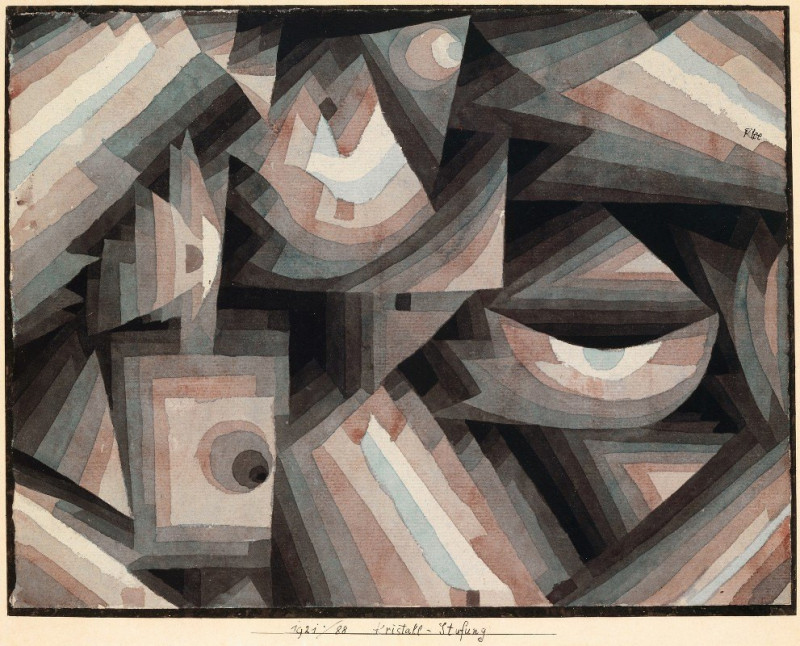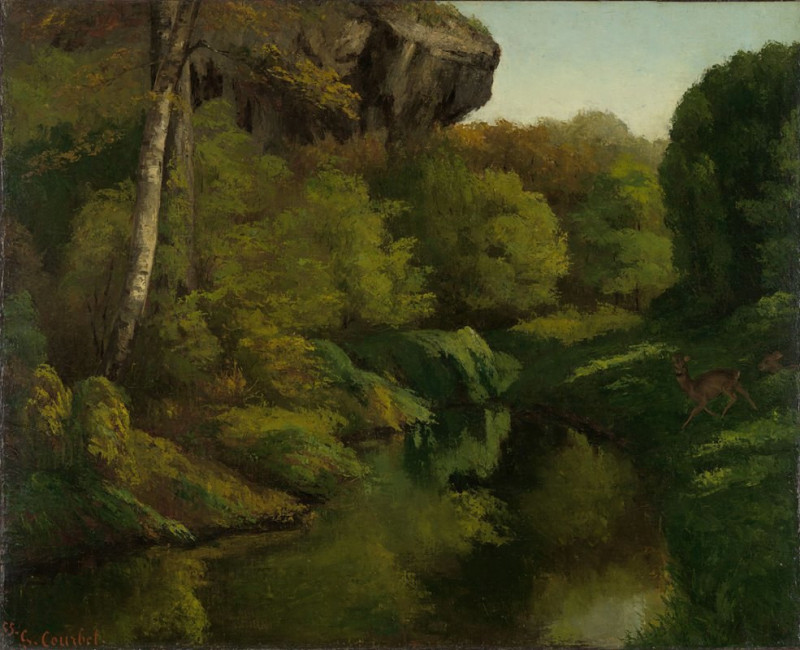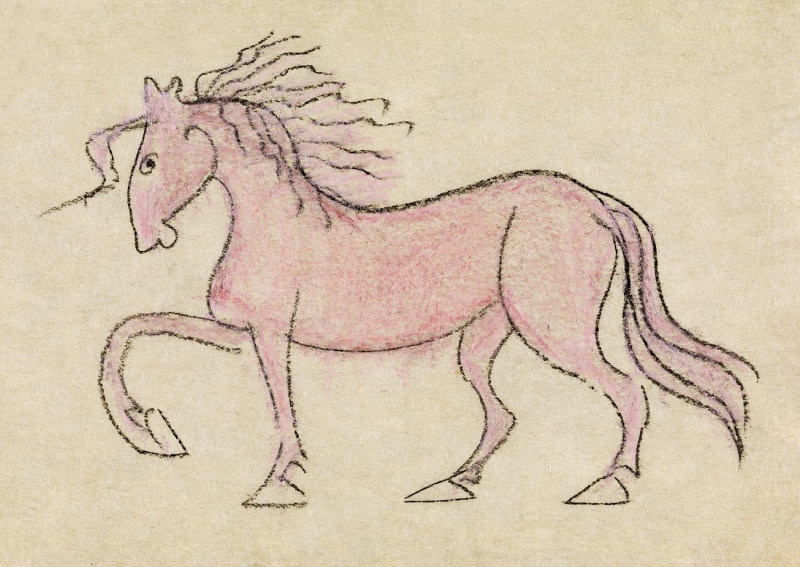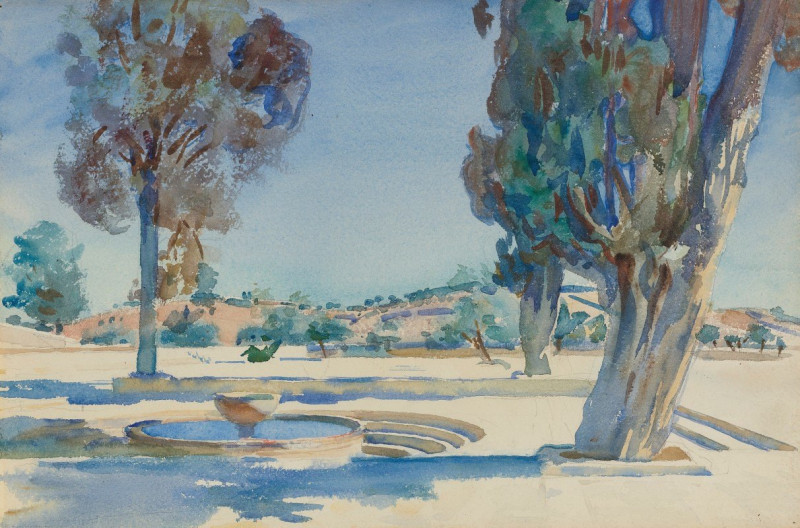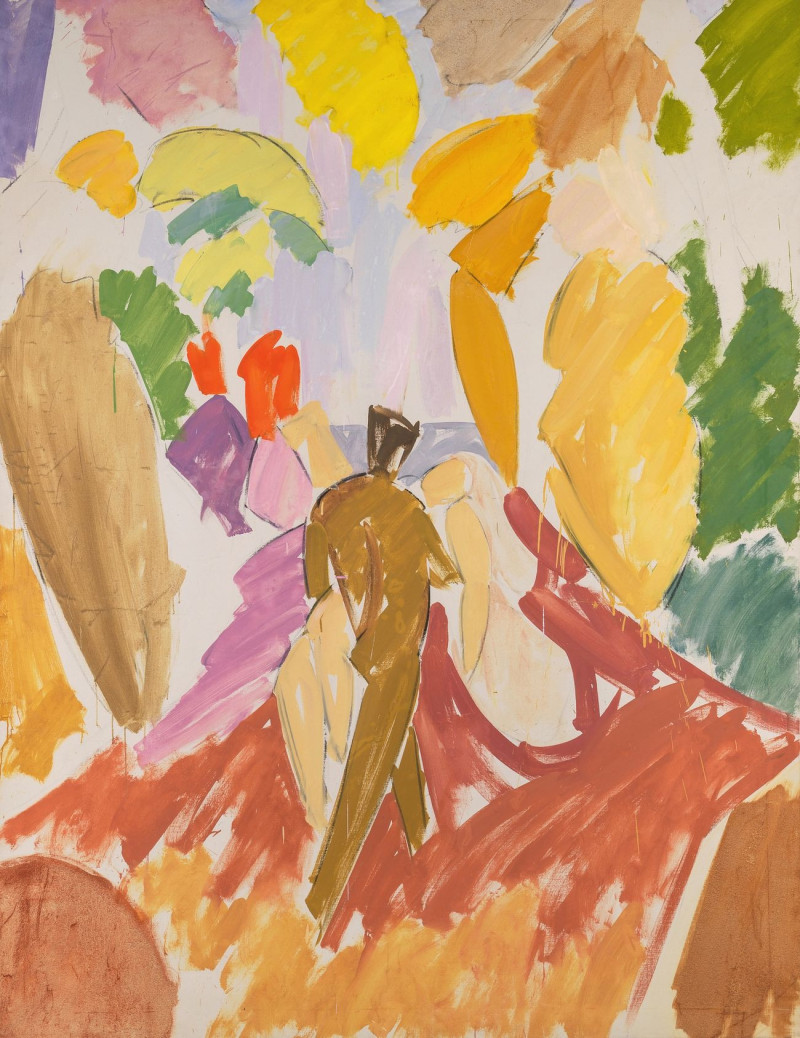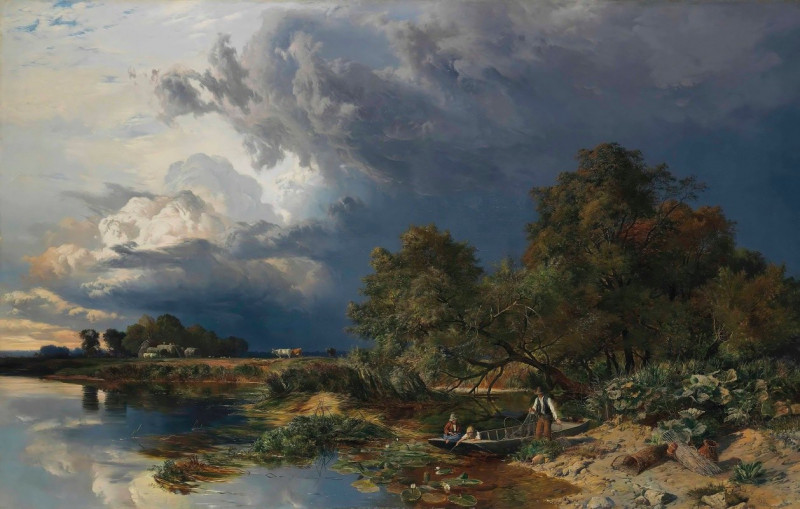Dorfpartie Strohhütten aus Staatz (1898)
Technique: Giclée quality print
Recommended by our customers
More about this artwork
In the serene painting "Dorfpartie Strohhütten aus Staatz" by Eugen Jettel, created in 1898, the viewer is transported to a rustic scene in the countryside. The artwork vividly depicts a collection of straw-thatched cottages nestled in a tranquil landscape, capturing the essence of rural life at the turn of the century.The painting’s composition focuses on several humble dwellings with roofs made of straw, harmoniously blending into the natural surroundings. The foreground shows a small, watery patch reflecting the clear sky, surrounded by patches of grass and wandering chickens, adding life and movement to the scene. A dirt path meanders through the center, inviting the viewer's eye to wander deeper into the painting and explore the horizon that subtly blends into a gentle sky.Eugen Jettel's masterful use of light and shadow, along with his restrained color palette, evokes a sense of peacefulness and timelessness. This depiction not only showcases Jettel's skill in landscape painting but also offers a glimpse into the simple beauty of rural settings in the late 19th century.
Delivery
Returns
Richard Alfred Eugen Jettel (20 March 1845 – 27 August 1901) was an Austrian painter, producing mainly landscapes. He studied at the Vienna Academy and moved to Paris in 1873, before moving back to Vienna in 1897 and serving as a co-founder of the Vienna Secession. He was made a Knight of the Légion d'honneur in 1898.


